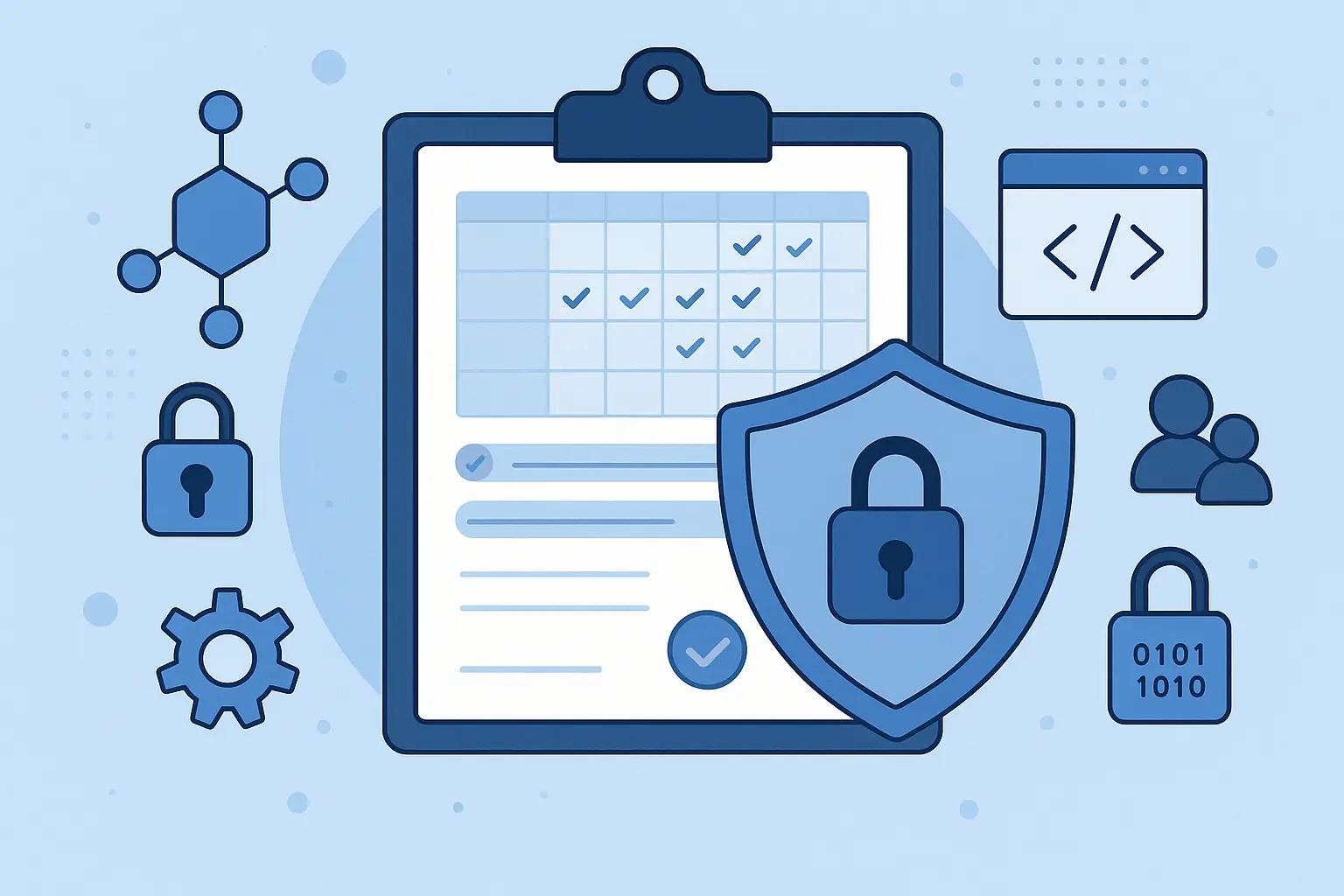6 Scheduling Tips to Give Your Writing Routine Structure
As much as we may hate to admit it, scheduling is actually a pretty useful tool in the quest for productivity. It would be nice to believe that, as writers, we could just flit around creatively. But alas, more often than not there are deadlines to meet, projects to juggle, and – probably most importantly of all – things to just get done.
Without a schedule or routine, it can be alarmingly easy to fall into a pattern of last-minute scrambles, and days where you get nothing particular done – and then feel guilty about it.
1. Write Down Your Schedule
It sounds extremely basic, but it works: writing down your schedule is pretty much a crucial component in having a successful writing routine.
If you have coworkers, it can be useful to use Bookafy, an appointment scheduling app to keep track of what your colleagues are working on. But if you work alone – or you’re just not keen on sharing every minute of your plan with your cohort – writing down your schedule is still important.
It can help to keep you accountable because you’ll be able to physically see if you haven’t done a task. It’s also a great reminder of when deadlines are coming up, or when you might be busier than normal. It’s even awesome for working out exactly how long tasks take you – which is helpful when it comes to both billing and deciding which clients you might want to work for again.
Having a good schedule is especially useful if you’re a writer in the gig economy, which can be a difficult place to stay motivated and on top of your game.
You can use a site like Google Calendar or Outlook, or go low-tech and scribble your schedule down on a piece of paper, but either way: write it down.
2. Decide on Priorities
Deciding on your top priorities for each week, and then each day – whether that’s writing a reminder email about an unpaid invoice or meeting an upcoming deadline – will actually take some of the pressure off.
You’re likely to find that you have far fewer priorities than you thought – and time to get them all done. And once you’ve scheduled them in and completed them? You have time to add some not-so-pressing tasks to your timetable, too.
The definition of business process: a series of linked tasks that end in the delivery of a service or product to a client. And most likely, there are a few tasks within your business process that should be a priority on some days but aren’t necessarily ones that you do daily.
Why not set up a recurring event on the 28th of every month to send out invoices, for example? It can be easy to let them slip your mind, but really – what’s a higher priority than making sure you get paid?
3. Get Technology on Your Side
We live in a wonderfully modern world, and technology – as well as being rather a distraction at times – can help us to successfully create a writing routine.
It might be that you should invest in free web hosting or PHP hosting to advertise your services to a wider range of clients, thereby filling your schedule with regular work.
It might be using tools like focus apps, which can block pre-determined sites to stop you procrastinating, or something like an online Pomodoro timer to help you remember to take breaks – more on that below.
Or maybe it’s finding the best conference call services so that you can be sure your calls will take as long as you think: no more waiting for connections to materialize.

4. Be Honest with Yourself
This one is also essential: you need to be completely honest with what you can achieve.
There is absolutely no point in scheduling a fourteen-hour workday if you simply cannot concentrate for that long.
Inevitably, you’ll get behind, then miss a task, then feel dreadful about the whole thing, and end up under the impression that you’ve had a totally unproductive day. In fact, you’ve probably done quite a lot – just not as much as you had planned.
And if what you got done weren’t your priorities for that day? Well, then you’re in trouble.
If you realize that you can’t put things off in any way, then try to delegate tasks. For example, ask for help from a custom writing service or hire a babysitter, or use AI-based tools for sharing your stories and web content. Instead, be realistic: schedule in time for breaks, for meals, for relaxing activities. For the inevitable home tasks. You could even set up a video chat online with friends who are also working from home, for a remote tea break.
This realism will stop you from feeling guilty, and from falling into a cycle where you take on more work than is possible in the timeframe, which is useful for your clients as well.
It also means you should know when you work best – and schedule around that, if possible. Not a morning person? Don’t plan to have gone on a run and be at your desk by 6.30 am: be realistic.
You most likely will have to work for some hours when you’re not at your peak energy – 2 pm post-lunch slump, anybody? But try to ensure your most important tasks fall within your high energy hours, so you can devote a little less brainpower to the easier ones without worry.

5. Remote Working: Ensure You Delineate ‘Work’ and ‘Home’
While there are several factors that affect workplace productivity, many of which can also be tackled by scheduling properly, working from home presents a whole new set of challenges.
There’s a temptation to work from the kitchen table, or the sofa – or even the bed.
If you aren’t differentiating between where you work and where you relax, it can lead to a kind of situation fatigue. You’ll find yourself unable to drift off in bed at night, or unable to concentrate when working from the sofa.
One easy way to fix this? Set up a workstation that – ideally – you only use for work. It doesn’t have to be fancy: it can even be sitting in a different place at the kitchen table. There just needs to be something that sets apart ‘work’ time from ‘home’ time.
Although a desk isn’t quite as cozy as under the blankets, we promise you’ll get more done.
You might think this tip isn’t related to scheduling – and it isn’t, exactly. But once you’ve established your working space, you can plan your schedule around it.
Once you commit to a working period – whether that’s four hours before lunch or half an hour to send out an invoice – make sure you do it in your work area. Decide on the best business phone app for you to ensure you don’t miss any important work calls. Don’t wander off to load the dishwasher. Don’t scroll through Instagram. Just do your work – and then have your break.
It might be that you need to schedule in time to stick a load of laundry on, do a lunchtime stretching class, or breathe some fresh air.
All of that is absolutely fine: nobody wants people experiencing burnout! And once you establish a place that is solely for work, you won’t feel tempted to just do a little when you should – by rights – be chilling out.
Then, establish when you’re going to work. Monday-Friday? Every day except Thursday? Saturday-Monday only?
Try not to work during your set time off – whether that’s full days or just portions of them. This of course is a privilege, but if you can afford to, it makes a huge difference to your mental wellbeing. This helps to prevent exhaustion as well as procrastination and, as a bonus, makes it much easier to work out which of your hours are billable.
6. Break Things Up
Ever had a really monotonous job?
If you have, you’ll know it’s a feeling you want to avoid – and scheduling can help you do so, assuming that you have relatively dissimilar tasks to complete. Having written down your schedule, you’ll be able to see where your deadlines are and, hopefully, get ahead of them.
Try to schedule your time so that you are doing varying tasks throughout the day. Alternate writing and editing different articles, to give your brain some time to forget what you wrote. Go for a five-minute walk around the block between blog posts. Slip some social media scheduling in between chatting to clients.
You can even color-code tasks so that you can see at a glance if you’ll be overdoing one category. Even if all your tasks look similar on paper, there are likely to be differences. Are you writing articles all day? Switch up the subject matter!
Each new start will allow you to re-focus, and you’ll inevitably perform better, and thus stick more efficiently to your schedule.
Will You Try Out These Scheduling Tips?
We cannot emphasize enough the importance of scheduling in a routine as a writer. Without it, productivity takes a hit, deadlines get missed, and priorities are skipped. It’s a surefire way to end up hating what you do!
With a little organization – and some help from the ever-emerging technology – you can ensure that your days are streamlined and efficient. You’ll find that you have more time to do the things that matter to you, and you’ll also be less stressed out.
So grab a pen or boot up an online calendar tool! You have nothing to lose – and rather a lot to gain.










